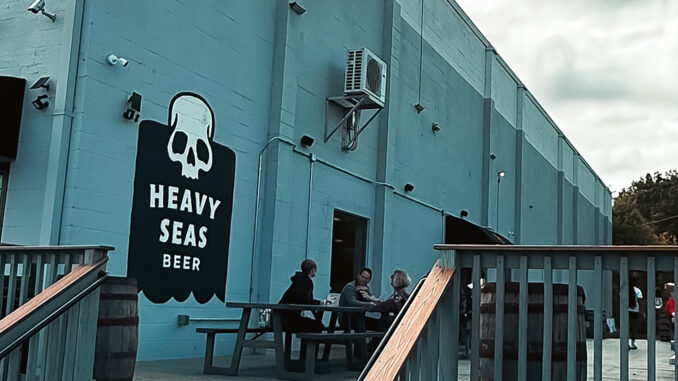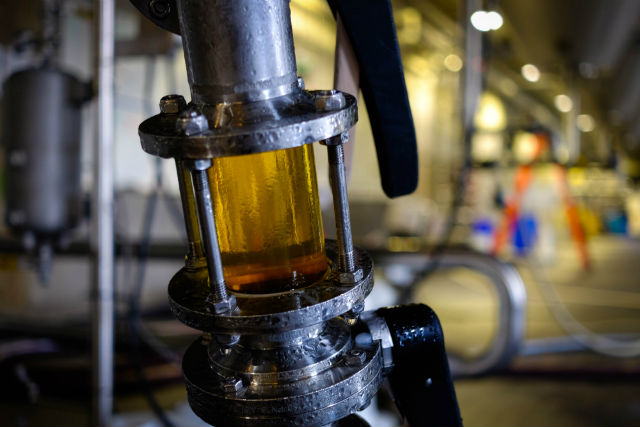
Tides are shifting for craft beer and for a veteran brewery like Heavy Seas Beer, the next wave forward is coming through partnership. The 30-year-old Baltimore-based brewery recently announced they have joined B3 Beverage, an emerging East Coast craft beverage platform uniting several well-known independent brands: Heavy Seas, Yards, Two Roads, and Bald Birds. Together, these breweries say their aim is to share resources and strengthen collective stability while preserving what makes each brand unique.
B3 is not a merger in the traditional sense, they explained in a recent press release. Instead, it’s a platform model that features a collaborative framework designed to give its members scale, shared logistics, and purchasing power while maintaining local identity and leadership.
For Heavy Seas, it’s a strategic adaptation to the evolving challenges nationwide.
“The industry is still stabilizing after COVID; consumer drinking patterns have shifted, and production costs — packaging, malt, hops, freight, and energy — have all risen,” said Caroline Sisson, Heavy Seas’ Director of Marketing and Hospitality. “Add to that market saturation in some regions, continued distributor consolidation, and changing regulatory landscapes, and you get a complex, multi-headed challenge.”
READ MORE: Heavy Seas Joins B3 Beverage Company with Yard, Two Roads, Bald Birds
That complexity has been squeezing breweries from all sides. Taproom recovery remains uneven, competition for shelf space is fierce, and consumer tastes are fragmenting across ready-to-drink cocktails, THC beverages, and non-alcoholic options. For some breweries, the path forward is to hunker down within themselves; for others, like Heavy Seas, the smarter move is to link arms with like-minded peers.
“This was a layered decision, not the result of a single factor,” Sisson said. “Consolidation, closures, and uneven taproom recovery underscore the benefits of scale and shared resources. Joining B3 helps position Heavy Seas to be more resilient and sustainable in the face of those pressures.”
At its core, the B3 model offers a balance between autonomy and alignment. Each brewery retains control over its recipes, brand voice, and community engagement while benefiting from centralized systems that ease operational burdens.
“What convinced us was B3’s model, a platform that enables brands to share capital and expertise while retaining local identity,” Sisson said. “Structurally, the deal will help Heavy Seas remain a distinct brand and operator in its core markets while gaining access to resources that reduce capital burden and accelerate growth where it makes sense.”
According to barrelage reported by the Brewers Association, the four companies produced more than 80,000 barrels in 2024, which would place the B3 company inside the Top 40 producers in the country.
That balance speaks to a broader question facing the craft segment today: what does “independence” really mean? For Sisson, the definition has evolved.
“True independence means keeping our identity, recipes, local presence, and decision-making for core markets intact,” she said. “It also means having the flexibility to explore new categories and markets without sacrificing what made the brand successful — the heritage, the people, and the community relationships.”
The challenge, of course, is perception. Partnerships and consolidations often draw skepticism from drinkers wary of “selling out.” Sisson doesn’t dismiss that concern.
“That tension is real and understandable,” she said. “The way to avoid the ‘selling out’ perception is transparency and action: preserve local leadership as much as possible, keep brands’ signature recipes and packaging, and clearly communicate where efficiencies are shared versus where local control remains.
“Heavy Seas wouldn’t have partnered if we believed the brand or its community would be compromised.”
On a practical level, integration within B3 means coordinated back-office functions, pooled purchasing, and shared logistics without a creative homogenization.
“Not everything will be centralized,” Sisson pointed out. “Many decisions — product, packaging, taproom programming — will remain local.
“Integration is gradual and tailored to where efficiencies truly help. Integration also takes time.”
For breweries feeling the same headwinds, Sisson’s advice is pragmatic.
“Stay realistic, stay nimble, and plan proactively,” she said. “Monitor market conditions, control costs where you can, and be open to creative partnerships that preserve what’s core to your brand while solving structural challenges — whether that’s procurement, production capacity, or distribution reach.
“Collaboration can be a path to sustainability, not just growth.”
Collaboration has always been part of craft beer culture, Sisson said.
“Today, collaboration can also be a survival strategy. Competition still matters — each brand must defend its own market and identity,” she said. “The most sustainable path is often a mix of both: collaborate where it creates structural strength, compete where it preserves distinctiveness.”
READ MORE: Do You Brew on Research or Heart?
Heavy Seas plans to remain firmly rooted in Maryland, led by a new generation of leadership while founder Hugh Sisson transitions to a more advisory role. A move like this could signal what may be an emerging playbook for regional-sized breweries: unity without uniformity, collaboration without compromise, and a willingness to adapt before being forced to.






Be the first to comment